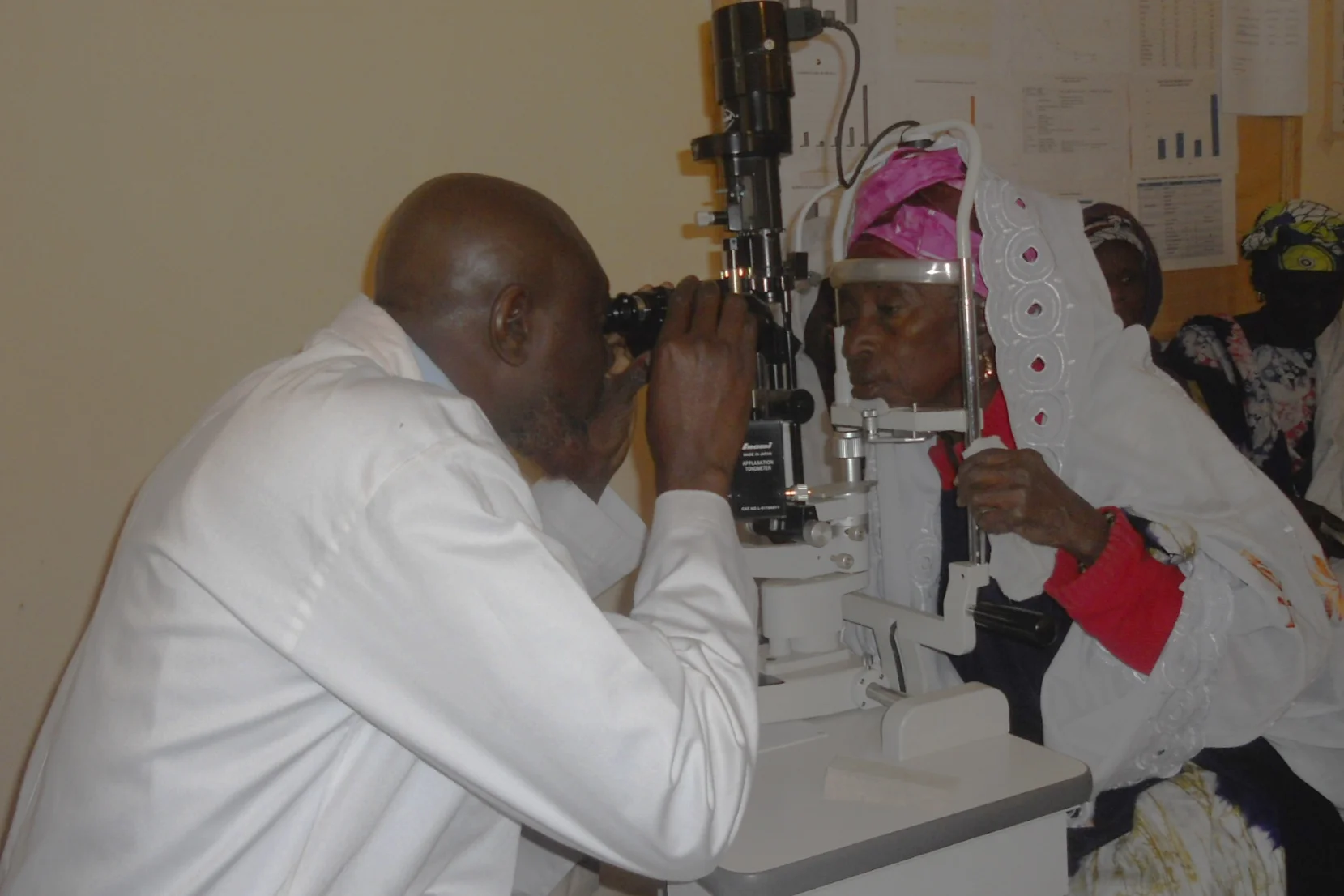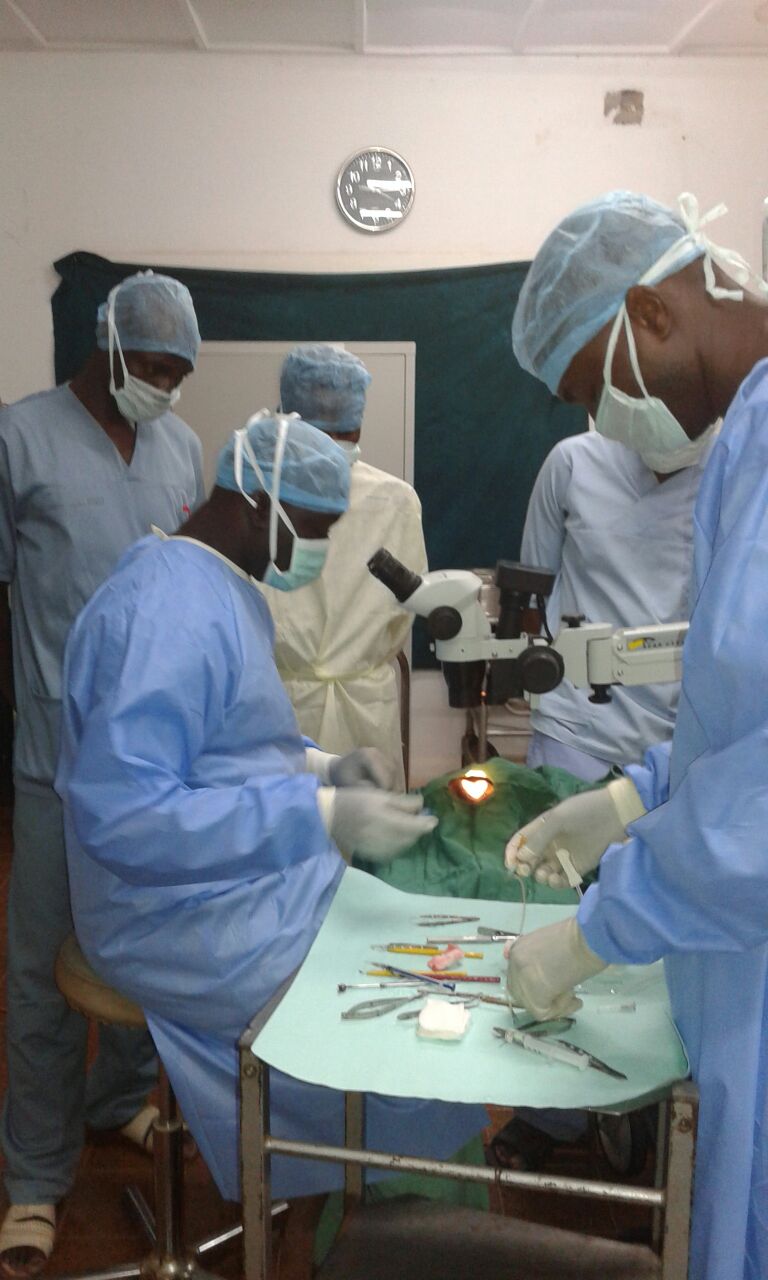The National Eye Health Programme
The National Eye Health Programme (NEHP) is part of the national health service in The Gambia. It is based at the country’s only dedicated eye hospital, the Sheikh Zayed Regional Eye Care Centre (SZRECC) in Kanifing.
Ten satellite facilities, Secondary Eye Units, are located throughout the country. Straightforward operations to treat mature cataracts are carried out at these units. More complex cases are referred to the SZRECC.
Cataract operations are not expensive in The Gambia; the charge for an operation to remove a mature cataract and post operative care is the equivalent of £30.00 but travel and subsistence for the patient and their guide will increase the cost beyond the means of many families, especially in the villages “up country”.
The NEHP is acutely aware of the number of people suffering from cataracts due to poverty - they call it “the cataract backlog”.
“Cataract Camps”, at which 50 or more people are operated upon, were introduced to reduce the cataract backlog. Cataracts Are Curable (CAC) was set up to provide free cataract operations for the poor of The Gambia primarily by funding cataract camps.
When funds become available, Cataracts Are Curable inform the NEHP. The NEHP select the area for the next camp and request the Senior Opthalmic Medical Assistant (SOMA) in the local Secondary Eye Unit to prepare a budget for an eye health survey (aka Community Screening).
During the survey as many people as possible are examined, non-surgical conditions are treated, mature cataract patients are referred for surgery at the local secondary eye unit and complex cases referred to the SZRECC.
The SOMA then prepares a second budget to cover the cost of operating upon the number of mature cataract patients that have been identified during the survey. These surgical lists can be any number, the most recent were of 75 and 82 patients.








